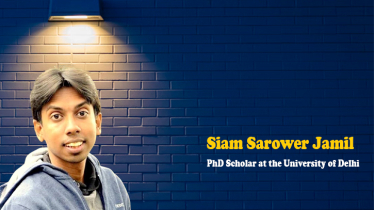
Change is happening everywhere and with faster pace. Such changing phenomenon and reality evidently bringing an excellent opportunity to scan challenges and craft innovative solutions that users can love. Hitherto, no matter how revolutionary the idea or concept, innovations cannot deliver as vowed if they get stuck in the ‘Proof of Concept (POC)’ trick and trap.
Some statistics are the stunning confession on the state of innovation for most businesses. Such as, only 22% of large organizations are successfully scaling digital innovation proof of concepts to drive growth(Accenture). Now it may offhand this figure around to highlight the real challenge underlying most innovation initiatives: 78% of enterprises have innovation projects that are not driving any real business value.
As long as these concepts remain as architypes, the time, money, and effort committed to the project are lost investments – never delivering the outcomes needed to embrace, defend, or offset change. It is quite alarming when it considers the widespread adoption of a user-centric approach to innovation. Companies are assessing, studying, and experimenting with their concepts through the lens of the user. Unfortunately, still this system appears to fall short in helping innovators move prototypes, that rely profoundly on technology to make them real, to deliver real-life business value.
Innovation initiative and missing: The user experience is a vital consideration when identifying a problem, assessing the situation, and developing and evolving an idea. But taking into account the complexity of change driven by the technology and the scale of value delivered is equally important. It should think about the demands of the diverse audiences that an innovation touches.
Employees expect a solution that operates within an existing enterprise architecture that is expanding and changing. Users want experiences that allow them to just get the work done simply, successfully, and quickly. Meanwhile, customers require smooth operations that are always-on, deliver on time, and keep up with a world that never stays still. For innovation to be successful, the perspective of every human directly and indirectly impacted by the innovation needs to be top of mind. This line of thinking needs to start as early as the ideation phase and move all the way through to full-scale operation.
Time for human centered approach: A human-centered approach to innovation still requires companies to go through the process of pinpointing the challenge and creating the right solution. But the strategy encourages innovation teams to go a step further by covering multiple sides of the innovation equation user experience, business needs as a whole, and the role of technology from ideation to business outcomes. New approach concerned, in many ways, the application of this approach now includes uniting, balancing, and aligning four fundamental factors of successful innovation.
Very often, user-centric innovation processes concentrate on only one or two of these factors. But with a human-centered approach, businesses can ensure everyone who has a vested interest or benefits from the innovation is considered. From the people who use it to the business leadership investing in it, to the technologists developing and operating the solution. This approach not only enhances the effectiveness and efficiency of business models and processes but can also transform the structure and organization of the company. It helps build a workplace culture around continuous innovation that increases user satisfaction, access, and sustainable delivery of business impact.
Heart of innovation is concerned people and not just users: As innovation processes and strategies continue to mature, businesses are beginning to realize the importance of people. But with the human-centered approach to innovation, “people” no longer mean “users” alone. Now, innovators can put themselves in the shoes of everyone who is using the technology as well as experiencing the outcomes delivered through the new solution. Shift in the innovation mindset, business can shift from merely developing a collection of prototypes to delivering and scaling productive solutions that can influence growth for years to come.
Human-Centered Design Matters: When done well, a human-centered approach fuels the creation of products that resonate more deeply with an audience — ultimately driving engagement and growth. As proof, one needs to look no further than the recent success of design-driven companies like Warby Parker, Fab, AirBnB and Pinterest. We’ve also recently seen digital stalwarts like Google, eBay and LinkedIn invest in the design of more cohesive and sophisticated user experiences.
Concluding thoughts and remarks: When we think of the human experience of digital transformation, it is often tech led. We need to start from a human-centric approach to solve your problem and the context that a person is in when they encounter that experience. Human-centered design is an innovative approach to problem-solving that starts with the people designing for, and ends with a new solution to meet their unique needs. It’s about building empathy and understanding, generating ideas, and enabling accessibility and adaptability of a product and servicers. Designing based on the human perspective is all about pushing the bounds of innovation and empowering people.
This reason that today more than ever, we must aim for a “human-centric innovation”. An innovation, that is, characterized by hybrid and hyper converged business models, powered by digital processes able of providing a fluid and personalized experience to the end user. To achieve this goal, it will be necessary to converge innovation processes on a few but fundamental areas of excellence of each country and to adopt a logic of open innovation, leveraging promising start-ups to transfer to businesses and Industry 4.0. In this way, focusing on innovative technological assets, capable of enabling the transformation of companies and of society, and outlining “hybrid” organizational models that also enhance human interactions, it will be able to transform the world around us and make the most of what.
END/TMD/ARS








